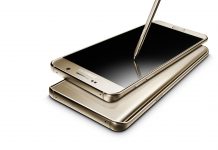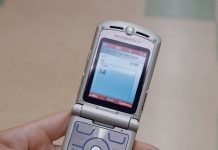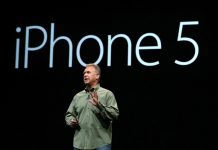 The saga of the “iPhone app kill switch” has taken another strange turn today. According to an article in the Wall Street Journal, Steve Jobs has confirmed the existence of an “app kill switch” in the iPhone. News blogs such as iTWire and Wired News are taking this as license to panic—at any moment, they suggest, the Apple Software Gestapo could kick down your virtual door and drag some hapless app off kicking and screaming to their “virtual Guantanimo Bay.”
The saga of the “iPhone app kill switch” has taken another strange turn today. According to an article in the Wall Street Journal, Steve Jobs has confirmed the existence of an “app kill switch” in the iPhone. News blogs such as iTWire and Wired News are taking this as license to panic—at any moment, they suggest, the Apple Software Gestapo could kick down your virtual door and drag some hapless app off kicking and screaming to their “virtual Guantanimo Bay.”
Not so fast. Jobs explains that the “kill switch” is to be used against malicious applications only, if they ever inadvertently let one out through their store. “Hopefully we never have to pull that lever, but we would be irresponsible not to have a lever like that to pull.” In other words, if Apple somehow manages to allow release of an app with keylogging, or a back door, or some other potentially harmful code embedded, they will be able to disable it and delete it from everyone’s device at once.
“Kill switch” panic
The panickers seem upset about the app-killing capability existing at all. Writes iTWire’s Alex Zaharov-Reutt, “Hmm… what would computer users say if Microsoft installs a ‘kill switch’ into Windows Vista? Or its mobile smartphones? Or if Nokia did the same?” He goes on to wonder whether “Apple fanbois [will] declare it’s all ‘ok’ because it’s Apple and we can trust them.” But on the other hand, look at the Windows PC environment. How many PCs out there have been “pwned” by trojans and are serving as part of someone’s botnet right now, pumping out spam and denial-of-service attacks? If Microsoft were able to “pull that lever” and clean the botnet infestations off those computers, the Internet as a whole would be considerably better off.
Apple has always been known for wanting to keep its devices and applications more closed than other manufacturers. Many would-be users decry the lack of openness and the hoops and restrictions that they must jump through to put software onto or develop for the iPhone, or for Apple in general. But on the other hand, this allows Apple to tailor the experience for their users so that everything just works—they do not need to be Computer Science majors or technical support junkies to use Apple products. Perhaps more than any other vendor, Apple’s gadgets approach the ease of use of appliances. That may be why they sell so well. (And speaking of selling well, in almost the same breath as admitting to the software kill switch, Jobs announced that 60 million iPhone apps have been downloaded so far.) The ability to limit what users can put on their iPhones is Apple’s way of protecting that experience—you will not need antivirus software if there is no way you can catch a virus. The ability to remove malicious code is insurance against something slipping through Apple’s nets.
It is doubtful that Apple would want the negative publicity that would come with using the “kill switch” for anything short of a full-blown malware panic. If they start removing applications that people have paid for, or reaching out to kill “jailbroken” phones, they could experience a massive backlash. Certainly, judging by the amount of “Apple is evil! Ph34r teh Apple!” rhetoric going around, it would not take much to kick one off. Fortunately, Apple seems to be fairly savvy about this sort of thing. For example, the only actions they have taken against people cracking iTunes DRM have been passive so far—simply updating the next version of iTunes to make it harder to do.
App Store laxity
And when you look at the somewhat liberal approval process for the App Store, it may well be a good thing that Apple has a way to kill malicious software. So far, Apple has approved and then had to pull an app that violated the terms of its contract with AT&T by allowing PC tethering via Bluetooth (NetShare), an app that cost $1000 to do nothing except say you are rich enough to drop $1000 on an app that does nothing (IAmRich), an app for displaying movie showtimes that I have been told was crash-prone enough to make the iPhone look bad (BoxOffice), and now an app that displayed a knife on its screen and played the music from Psycho (Slasher). (That last one may seem innocuous enough, but Apple has been taking criticism over its release—there has been a rash of knife killings in the United Kingdom lately and people are a little twitchy about it over there.)
With that kind of track record, it seems likely that sooner or later a malicious app will accidentally be approved. Thus, for Apple, having a “kill switch” available takes on the aspect of making sure you have enough lifeboats for all the passengers on your “unsinkable” cruise ship. After all, it might sink.
In the end, the iPhone is what it is. There is nothing forcing people to use it; they can decide for themselves whether they want to put up with Apple’s restrictions and use the iPhone, or forego both the iPhone and the restrictions in favor of something else (such as Google’s forthcoming Android phones, of which a new video is available). Regardless, the existence of a “kill switch” does not mean that Apple is necessarily “evil”—just that they are prepared to protect their users’ experience with their products. In that light, whether you decide to use the iPhone just comes down to whether you trust their judgment.

































>>>It is doubtful that Apple would want the negative publicity that would come with using the “kill switch” for anything short of a full-blown malware panic.
Until, as a condition of a Chinese App Store, Apple is told to ban any ebooks by or about Tibet or the Dalai Lama.
Rupert Murdoch was quick to throw the BBC off his satellite TV system to please the Chinese.
Never underestimate the power of an untapped billion people market.
And the inevitable One More Thing …
AT&T itself has its own mud to deal with, permitting the NSA to install Internet spy machines in its offices.
We are all made complicit in evil.
It’s a good thing nobody is being forced to buy iPhones, then.
“The panickers seem upset about the app-killing capability existing at all. Writes iTWire’s Alex Zaharov-Reutt,”
Um, yeah, that’s exactly the problem and why I’d never buy an iPhone. It’s not your phone. It’s Apple’s.
Apple’s terms make typical DRM schemes look like a walk in the park.
Then you shouldn’t buy one. You’re not its target audience anyway. It’s not meant for people who want to be able to fiddle around under the hood. It’s meant for people who want something simple that just works without them having to fiddle around under the hood. Apple isn’t selling this as a PDA for you to do what you want with. They’re selling it as a fancy phone (or mp3 player) that Just Works, because they’re doing all that stuff under the hood for you.
That’s what Apple does. That’s why the iPod blew every other mp3 player right out of the water, including everything that even Sony—the people who originated pocket form factor music playing—could throw at it. That’s why the iTunes Music Store has become the biggest retailer of music in the nation, despite the fact that they sell (mostly) less-than-CD-quality stuff with DRM on it. It All Just Works.
Again, the iPhone is not meant to be a PDA, for all that it looks like one. It’s a cellphone (or MP3 player, in the case of the iTouch) with some PDA-like functions slapped on, and unlike PDAs, most cellphones aren’t all that “open” anyway. If you try to make it out to be a crippled PDA that you want instead of the fancy phone or MP3 player that it’s meant to be, you’re conflating oranges, and, well, Apple.
amen, chris.